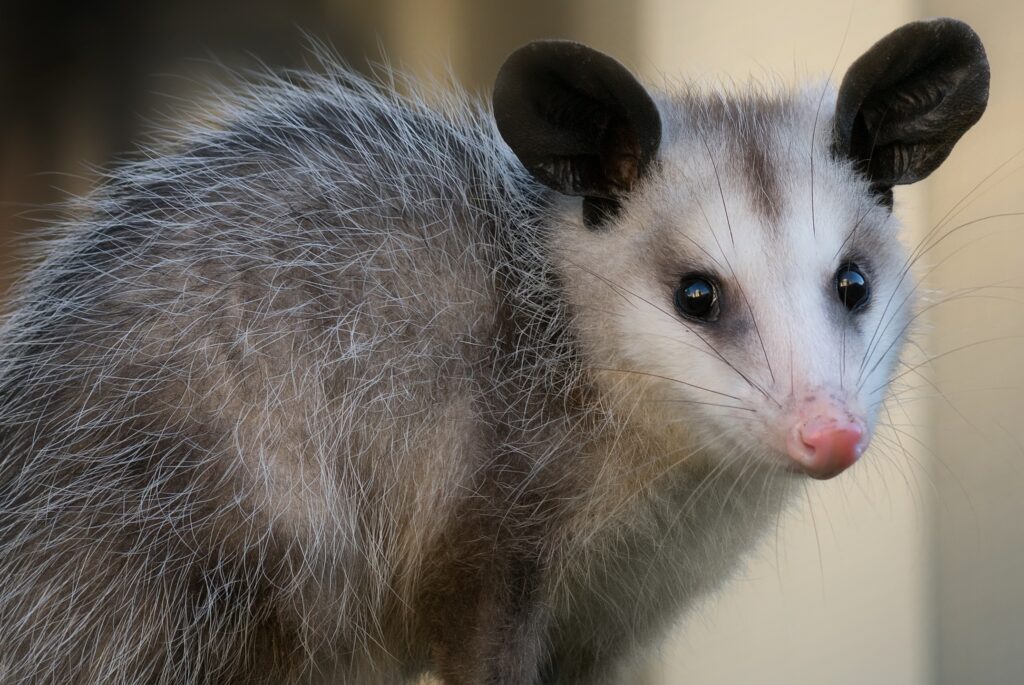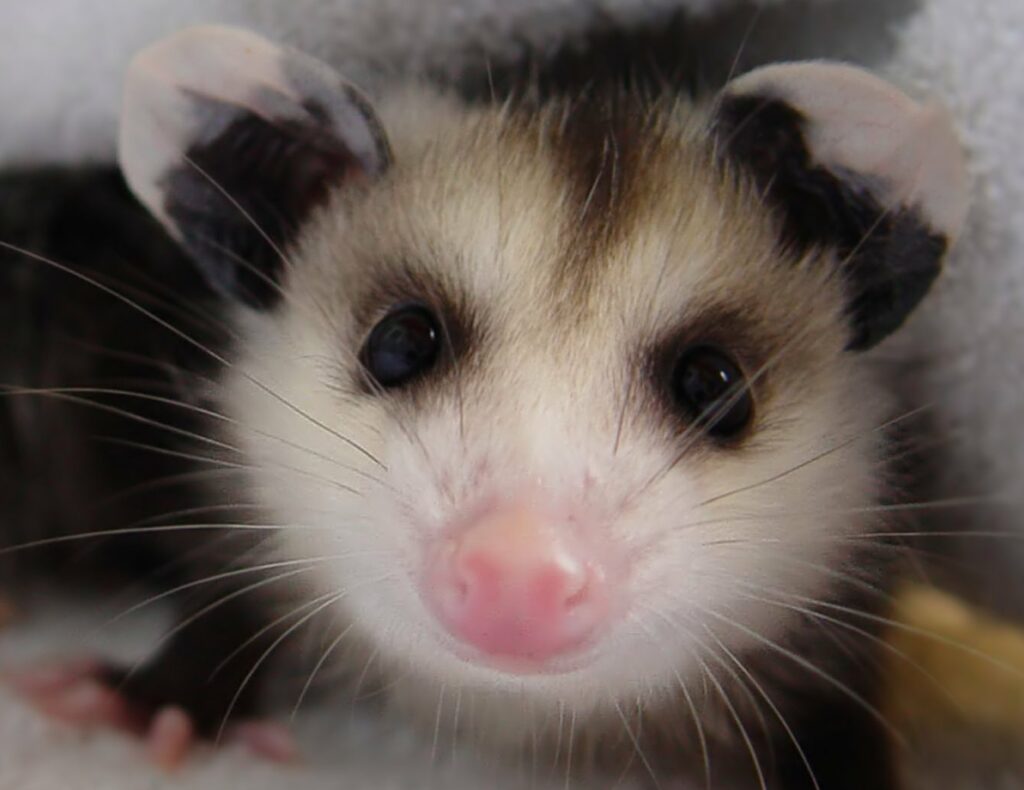
There are few sounds as happy as an animal safely and quietly nomming away on their food. Like a bird quietly pecking at its seeds, or cottontail bunnies munching on greens. Or a family of opossums gathered around their dinner dish together. Round furry bodies and whiskered faces with pink noses – all in a polite circle, quietly crunching and num-num-yumming away.
These opossums arrived at the TWC with their mom in the springtime when they were tiny babies. Mom didn’t make it. The babies were kept in the nursery at first and fed with a syringe for weeks. They are now in an outdoor enclosure – all seven siblings together – where they’ve been since mid summer.

They are almost adult now. Large juveniles. And they need to be taught that humans are awful, scary, dangerous creatures. These sweet opossums are a little too friendly and too used to people, which means they would not survive in the wild. So they need to get a little more healthy fear before being released.
The first time I’ve handled a juvenile-adult opossum was in the ICU room at the TWC tonight.
When I gently lifted the hide box to get this little guy out for treatment, he was on his back, furry tummy exposed, legs up, like a small dog who wants a belly rub. He wasn’t doing the famous opossum play-dead act complete with stink, but he didn’t do the usual open-mouthed hiss that opossums of all ages, from youngsters to fully grown adults, usually do.
It was like I uncovered him when he was a sleeping. Which is likely, since it was very early evening at the time, and opossums are nocturnal. They usually start getting active at dusk and after dark. Of course, a belly rub was not the plan. These are patients, not pets, at the TWC.
Opossums get a bad rap unfairly. Surprisingly cute in person, opossums are among the most helpful and harmless animals we have in the city: they don’t harm people, or property, or pets. Not the smartest creatures, but they can eat almost anything. And they do – including all sorts of things that most people don’t like and are happy to have removed, like beetles, ticks, cockroaches, snails, slugs, mice, rats, snakes, dead animal remains, and over-ripe fruit.
As City Wildlife says, “Opossums usually don’t tip the trash cans or dig up gardens but they often stop to clean up the mess left by another animal and get all the blame.”
Sometimes mistaken for a large white-grey rat, the opossum is more like a kangaroo. It’s the only marsupial in North America, carrying its babies in a pouch when they are first born.
The first thing an opossum will usually do when it feels scared and threatened is open its mouth to show its sharp teeth and hiss at you. Trying to be oh-so-scary. They will bite, like any animal, but these little guys are more likely to faint if their hissing doesn’t scare you away.
This one in ICU is almost but not fully adult. A juvenile, probably a little younger than the family in the outside enclosure, and very thin. I could feel his hip bones.
Similar to handling a snapping turtle, I held the base of the tail gently but firmly just for stability. Then slid my dominant (right) hand underneath his belly from the back-side, to lift him up. As is the system at TWC, I used a bedsheet to help secure him, and to help alleviate his stress by covering his head and eyes.
Unfortunately, this particular opossum has had diarrhea. Which C warned me about. She said it looks like liquified dark chocolate. Which was true. But my oh my it doesn’t smell like chocolate. Yow. He is being given special foods to help with refeeding syndrome. As well as medication and fluids.
Apparently opossums are one of the few creatures who don’t need to be held gently but firmly as they are being treated. They will stay mostly still on their own and are more likely to squirm or thrash if they are held. And they have thick tough skin. It wasn’t easy, but C managed to get fluids into this little guy and quickly give him oral medications as well. I then gently returned him to his hide space in his enclosure for the night.
Opossums are not equipped for winter, with exposed tails and ears susceptible to frostbite. I think we will be seeing more who need treatment as winter progresses.
